Let’s talk about 3 cleaning swaps you can make right now for a cleaner, healthier home. All of these swaps include both a DIY option and store-bought recommendation.
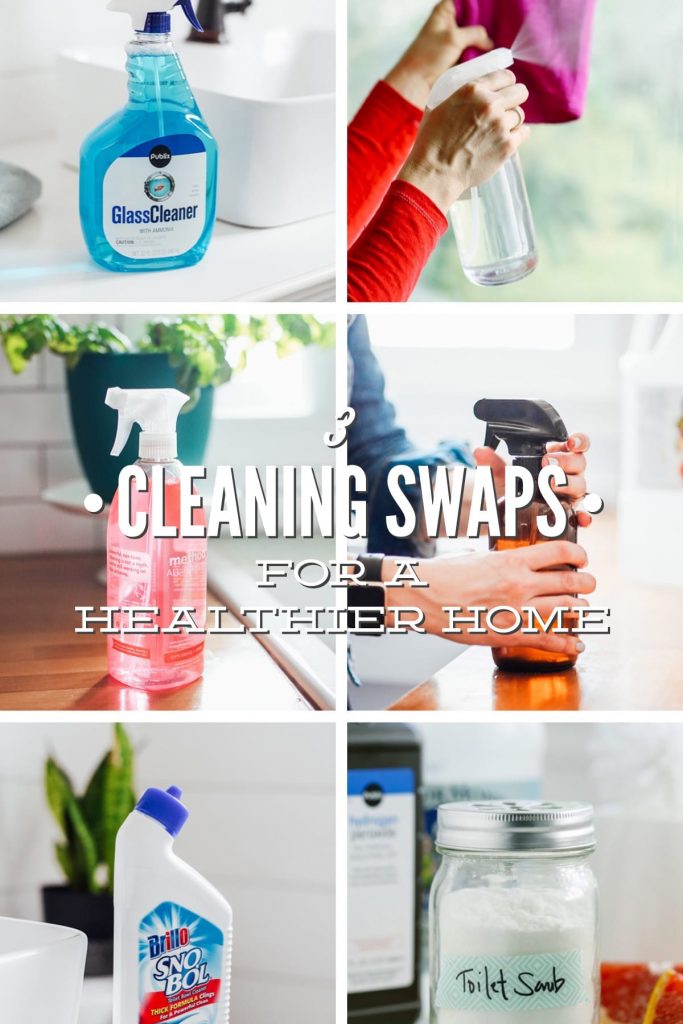
Want to Save This Article?
Enter your email & I’ll send it straight to your inbox. And you’ll get new recipes & tips each week.
When it comes to making the switch to safer, more natural cleaning products, you don’t have to swap out all your cleaning products at once. I recommend checking out the EWG’s database where you can research the individual products in your cleaning caddy. From there, you can make an informed decision about what to swap and what to keep. Below, are three of the easiest and best swaps you can make right now.
Are Cleaning Products Safe?
Are Cleaning Products Safe?
In the US, cleaning and body products do not go through rigorous testing or approval. Cleaning companies are not required to disclose their ingredients (beauty products are required).
When you take a deep dive into researching these products and ingredients, it can be concerning to read about the impact they have on the body. For example, “fragrance” is considered a trade secret that is commonly found on the ingredient list (if disclosed) of products. This ingredient (which can be made with hundreds of different chemicals, including phthalates which disrupt hormones) is top secret and incredibly concerning in terms of toxic ingredients. This is just one example of the concerning ingredients that can be used to make a product.
Maybe a small amount of these ingredients aren’t harmful (as companies claim), but when you consider how many products we use in a day (or week or month), we aren’t using a trace amount of these chemicals in our homes and on our bodies. We’re burdening our systems with these ingredients and the cumulative effect of using so many potentially-toxic chemicals.
Of course, there are also ingredients that aren’t as concerning and don’t negatively impact our health and body. Chemicals aren’t bad (after all everything has a chemical composition). We just want to make sure that we’re not using the chemicals that have been shown to negatively impact our environment (our home environment) and health.
What to Look for When Buying Cleaning Products
What to Look for When Buying Cleaning Products
When it comes to cleaning products, it can be difficult to know what goes into a given product. You’ll find a lot of natural and green marketing words used to describe cleaning (and body products) today. These terms have no regulation. Yep, you read that right: Nada! Zilch! None! Full transparency of ingredients is all we have to help us navigate products and make informed choices.
Many companies reveal ingredients on their website, so looking up a particular cleaner online can be helpful in knowing exactly what’s going into that product.
There are two ways to find the safest, healthiest cleaners…
- Source from a transparent company: A company should be completely transparent about their sourcing and ingredients, particularly a company that claims (on a website or packaging) to be “natural” or “non-toxic.” There should be nothing to hide. A company should be proud to disclose their ingredients and be willing to tell you what’s inside and why, not just what’s missing. Be cautious about brands that just want to tell you what’s missing from their products and don’t reveal the actual ingredients used to make a product. You can find lists of cleaning ingredients to avoid, so you can educate yourself on specific ingredients. Also, looking up products on the EWG’s website can be a great way to get a feel for what’s inside a cleaner and the health impact of those ingredients. My favorite brands include: Biokleen, Ecover, Better Life, Dr. Bronners, Seventh Generation, Branch Basics.
- Make your own cleaners: By making your own products, you’ll know exactly what ingredients are used. Plus, making your own products is usually cheaper than buying store-bought products as many “greener” products can be quite pricey. I don’t make every cleaning product, but there are a few that I continually make at home. These are highlighted in the swaps below.
3 Cleaning Swaps for a Healthier Home
Swap #1: All Purpose Cleaner
An all purpose cleaner can be used to clean just about any and every surface in your home. I use this cleaner to spray down my countertops in the evening after the messes of the day, to clean the bathroom, and to wipe up the doggie accident (we have a sweet, elderly dog, it happens). This cleaner is the most-reached for product in the home, so it’s the most essential to swap out. Ditch the cleaners full of artificial fragrances and mystery ingredients and make your own or buy an all-purpose cleaner from a trusted company.
DIY Option
- 2 cups distilled water
- 2 TB liquid castile soap
- 15 drops essential of choice, such as: lavender, tea tree, orange, or peppermint
- 16-ounce glass spray bottle
Pour the water into the spray bottle (use a funnel, if needed). Add the castile soap and essential oil. Gently shake the cleaner. This cleaner may be stored at room temperature. This is safe to use on most surfaces.
- 1 cup white vinegar
- 1 cup distilled water
- 15 drops essential of choice, such as: lavender, tea tree, orange, or peppermint
- 16-ounce glass spray bottle
Pour the ingredients into the spray bottle (use a funnel, if needed). Gently shake the cleaner. This cleaner may be stored at room temperature. This is not safe to use on marble or granite.
Store-Bought Option
Branch Basics: This company has won my heart and cleaning caddy. Not only are the founders of Branch Basics super transparent about their ingredients and have a deep passion for teaching people how to get rid of toxic chemicals in their home, the products they sell really work. I say products, but really there is only one main cleaning product: the concentrate. With this one product, you can make multiple cleaners to use in your home, from all-purpose cleaner to laundry soap to hand soap. Branch Basics sends you all the bottles (which include how much concentrate to water you need to mix together) along with the actual concentrate. Once you have the bottles, you simply need to replace the concentrate as needed. Check out my podcast interview with Branch Basics here.
Seventh Generation: This is an easy-to-find all-purpose cleaner in most stores. I’m not a fan of all Seventh Generation products, but their all-purpose cleaner is a winner.
Swap #2: Glass Cleaner
This is another cleaner that’s used frequently in the home. Windex or similar generic brands are generally the go-to option in most cleaning caddies. This particular cleaner receives a D grade from the Environmental Working Group (that’s not good). Among the concerns are ingredients that cause respiratory issues and skin irritations.
DIY Option
- 1/2 cup rubbing/isopropyl alcohol
- 1/3 cup white vinegar
- distilled water
- 16-ounce glass spray bottle
Add the alcohol and vinegar to the spray bottle. Add water until the bottle is full (use a funnel, if needed). If you don’t care for a vinegar scent (although it goes away once the surface dries), add a few drops of your favorite cleaning essential oil. This cleaner may be stored at room temperature. If you don’t feel comfortable using rubbing alcohol, use more vinegar instead. Want to learn more about this recipe? Read my homemade glass and mirror cleaner recipe post.
Store-Bought Option
Branch Basics: Again, Branch Basics pulls through on the store-bought option. As I mentioned, the beauty of Branch Basics is one cleaning concentrate makes multiple cleaners, depending on the ratio used.
Swap #3: Scrub Cleaner
A scrub cleaner can be used to clean toilets, tubs, and sinks. This multi-purpose cleaner is definitely one that I recommend going the DIY route with since it’s so easy to make.
DIY Option
Here’s how to make your own scrub cleaner…baking soda! Yep, that’s it. Simply sprinkle some baking soda in your toilet, let it sit for a few minutes, then scrub with a toilet bowl brush. Want something more? Add a spritz or two of all-purpose cleaner. For sinks and tubs, sprinkle baking soda in the surface area and then scrub with a dish towel or cleaning brush. Watch the dirt and grime slip away from the surface. Need something more? Add a squirt of castile soap or Sal Suds (or your favorite “more natural” dish soap–see my recommendations here) to a rag or brush while scrubbing.
Store-Bought Option
Once again, the best option for a store-bought scrub cleaner (but really, do you need one? The DIY option is so easy!) is Branch Basics. This time, I recommend the Oxygen Boost. If baking soda alone isn’t working for you, the Oxygen Boost will be the extra power you need.
That’s it! 3 easy cleaning swaps you can make right now for a cleaner, healthier home. Tell me, what are some cleaning swaps you’ve made or plan to make?

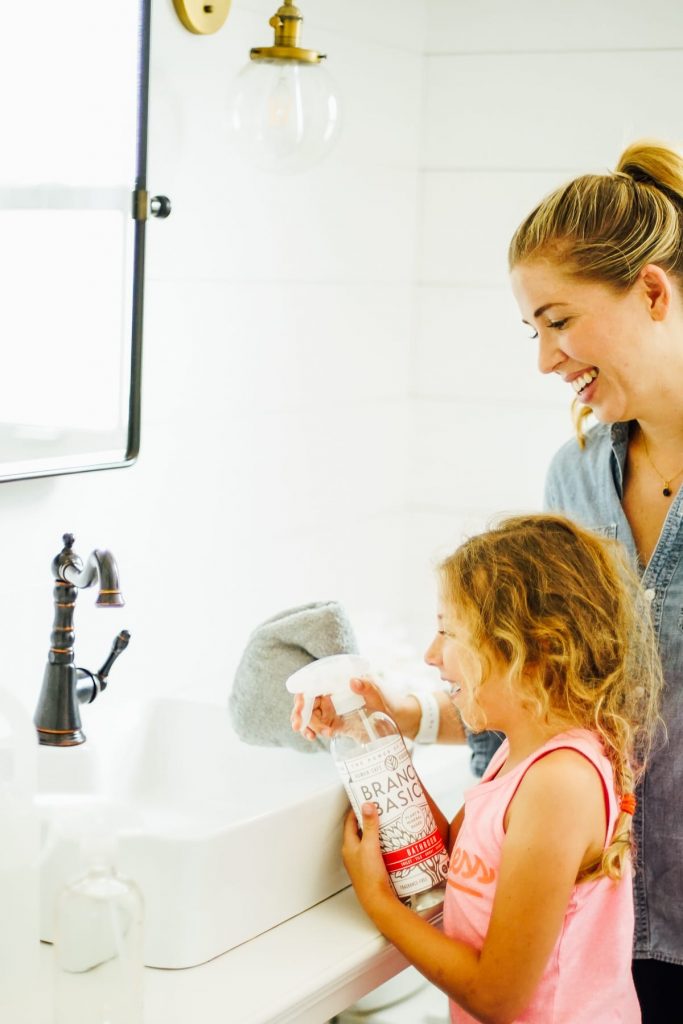

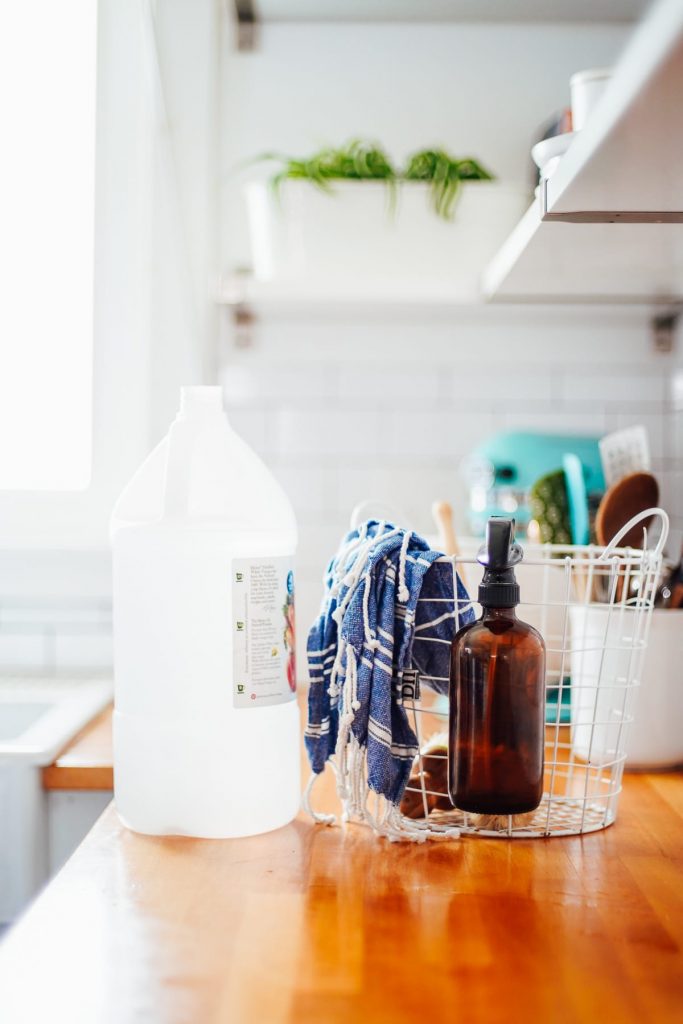
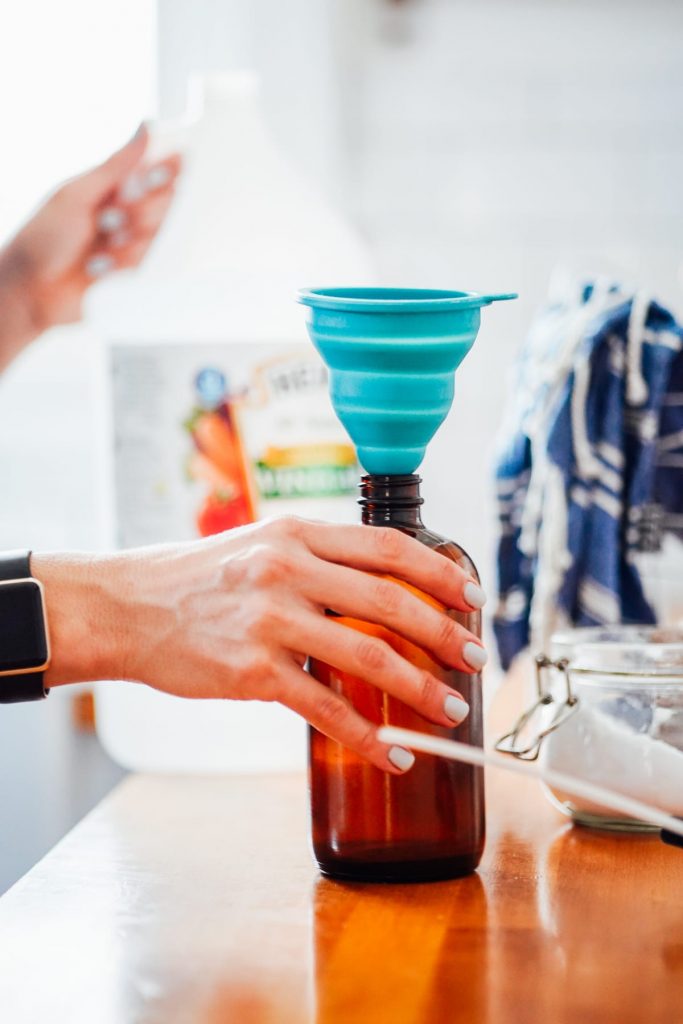
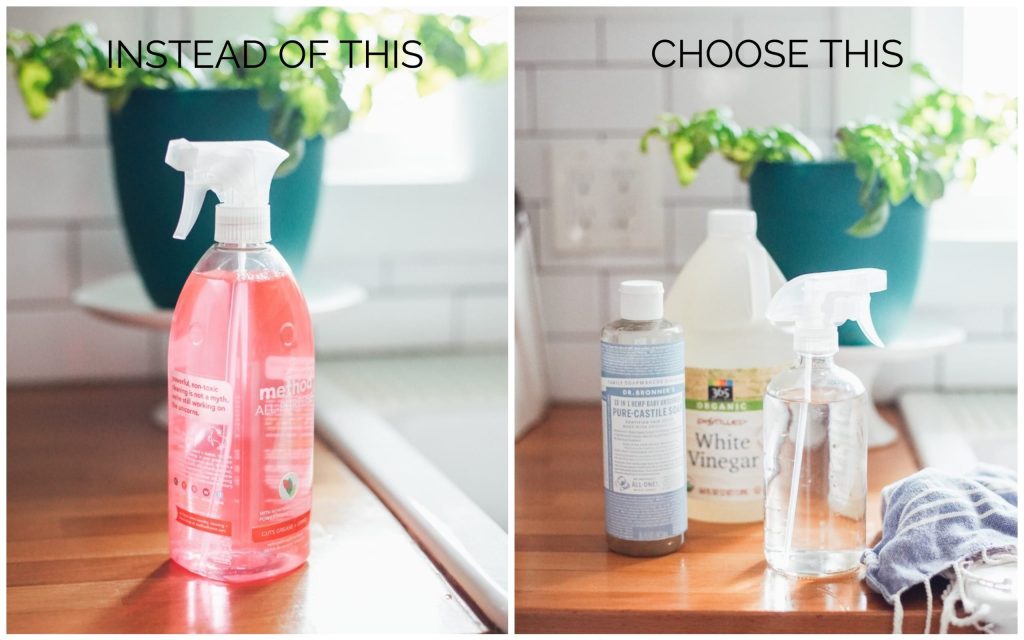
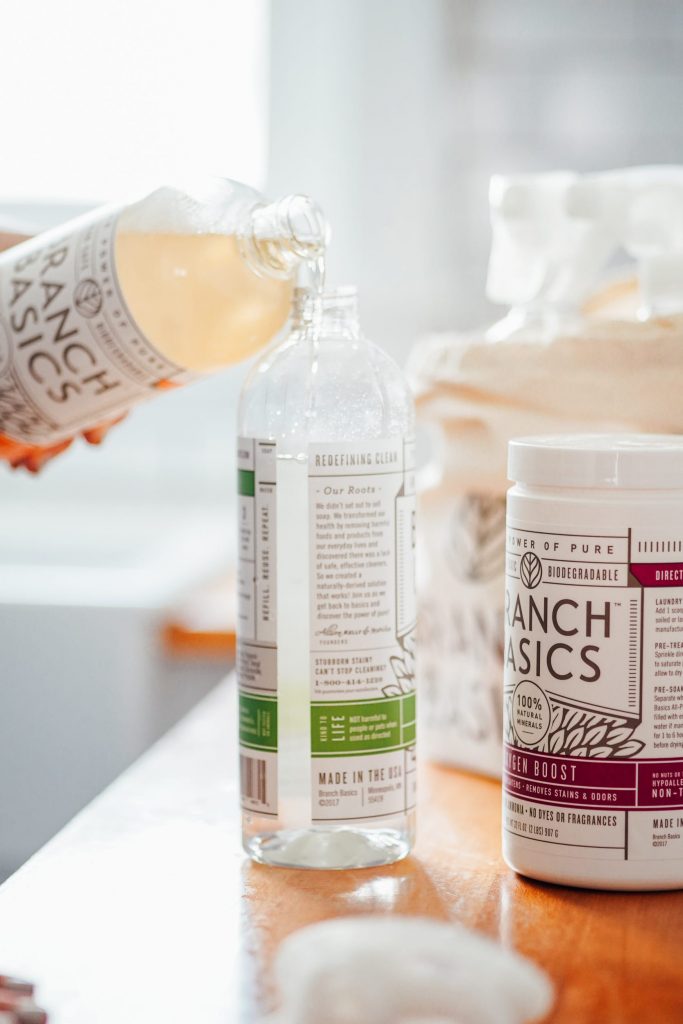
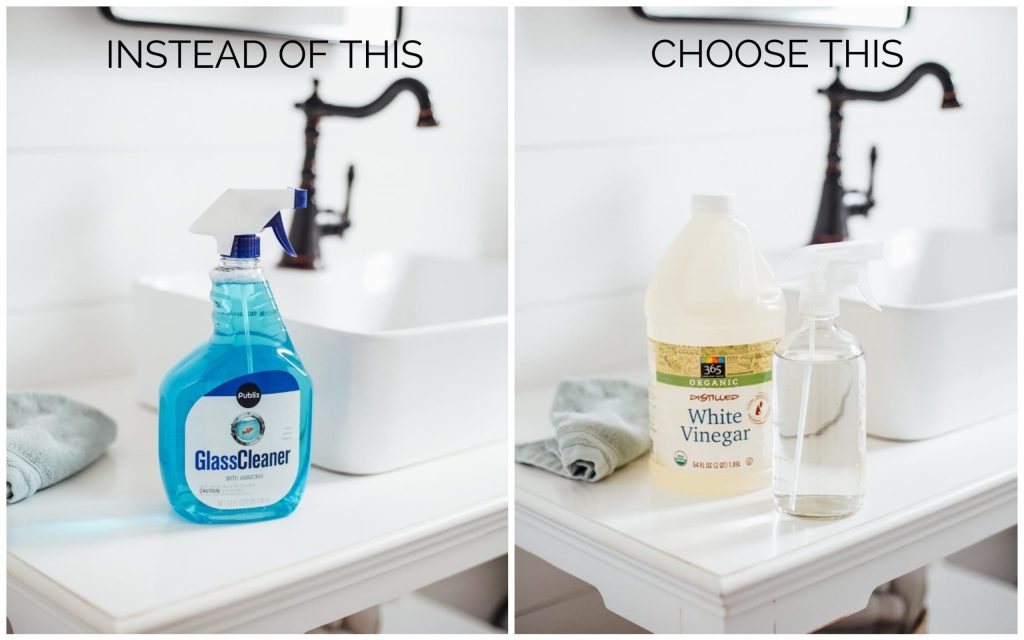
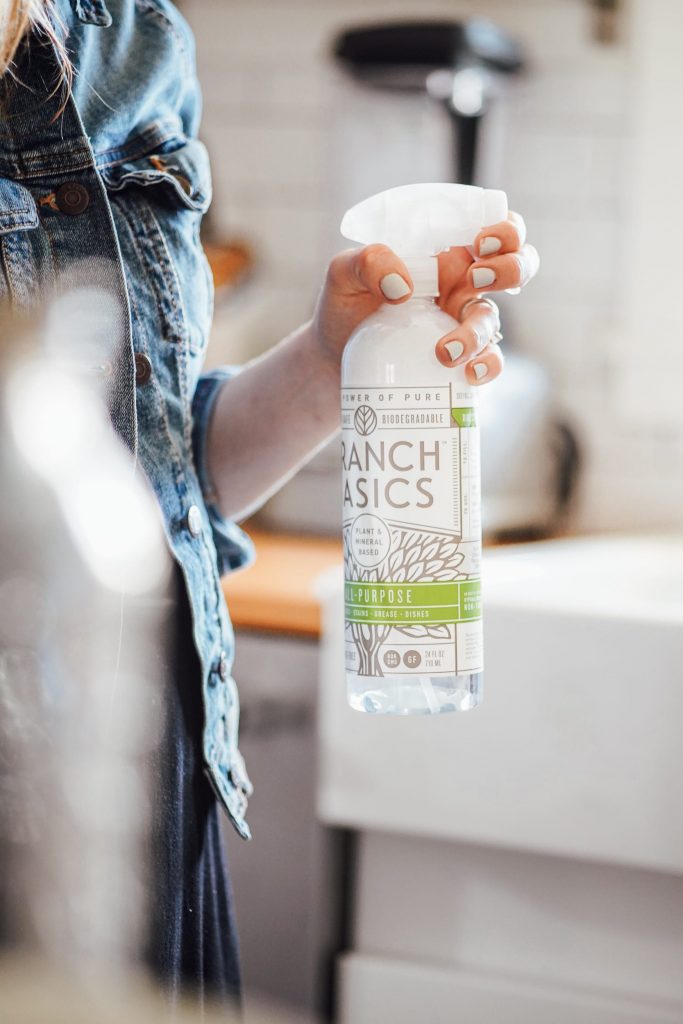
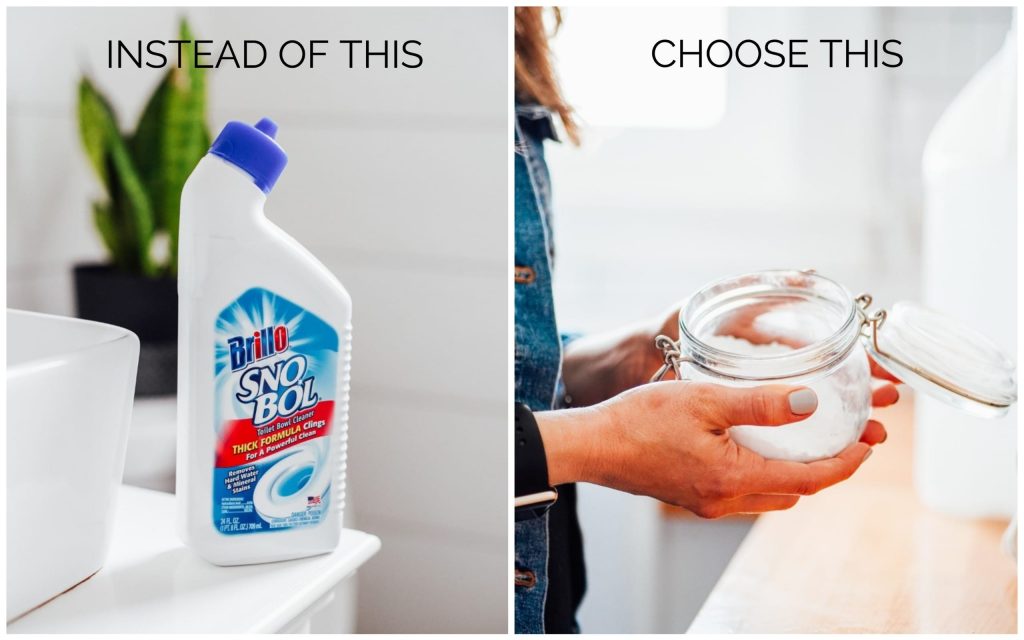
I’ve been making my own cleaning products for over 30 years. I never ever buy cleaning products
That’s great, Angie!
Thank you for sharing this! I am trying to avoid products with chemicals that may cause harm to our environment. Your blog is a huge help for me to start going green. My mom who is now 75 years old is very sensitive when it comes to chemical cleaners and I think these DIY cleaners you mentioned is perfect for our home.
So glad it’s helpful, Cardi!